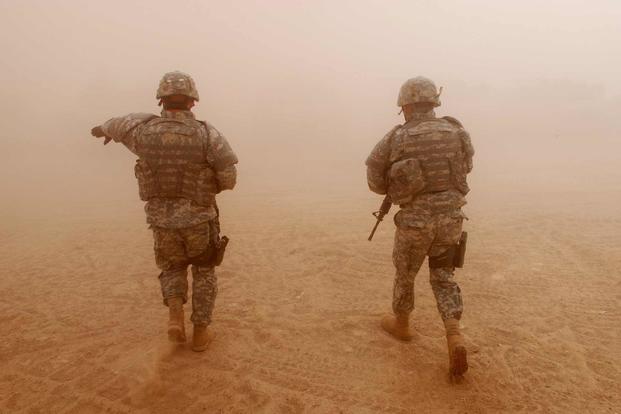The Authorization for Use of Military Force is a joint resolution by Congress that gives the U.S. president the authority to leverage military force in a conflict. Such authorizations carry instructions regarding which region, what nation or even specific individuals the force can be used against. They may require reports to Congress or carry other specific parameters.
An Authorization for Use of Military Force (AUMF) is typically requested by the president. Today, the most well-known AUMF is the Authorization for Use of Military Force of 2001 passed in response to the Sept. 11 attacks on the U.S.
How Is the Authorization for Use of Military Forces (AUMF) Different from a Declaration of War?
While a declaration of war and an AUMF often look the same for the U.S. military members deployed to fight, they carry many different implications, according to a report by the Congressional Research Service (CRS).
Also granted by Congress, a declaration of war triggers a "state of war under international law," the CRS report says. It gives the OK for "the killing of enemy combatants, the seizure of enemy property, and the apprehension of enemy aliens." That's not a trigger created by an AUMF, although the report says the rules of the Hague and Geneva Conventions apply to all armed conflicts, regardless of whether war has been officially declared.
Congress has passed declarations of war 11 times since America's founding. The first declaration of war formalized the War of 1812. The most recent declaration of war was passed in response to the 1941 attacks on Pearl Harbor and formalized America's entrance into World War II.
Congress has used the AUMF instead of a declaration of war 11 times, according to the report. The first such AUMF was passed in 1798 in response to the French seizure of American ships on the high seas. That AUMF allowed the U.S. Navy and U.S. privateers to defend those vessels, retake any captured U.S. ships and capture any armed French vessels.
Since World War II, the AUMF has been the sole legislative tool for granting the president the authority to deploy military troops into combat. For example, the AUMF known as the Gulf of Tonkin resolution allowed President Lyndon Johnson to use military force in Vietnam.
2001 Authorization for Use of Military Force
The 2001 Authorization for Use of Military Force is an AUMF granted by Congress at the request of President George W. Bush in response to the Sept. 11 attacks on the U.S.
Passed Sept. 18, 2001, the 2001 Authorization for Use of Military Force remains in effect and gives the president the authority to "use all necessary and appropriate force against those nations, organizations, or persons he determines planned, authorized, committed, or aided the terrorist attacks that occurred on September 11, 2001, or harbored such organizations or persons." It also says the president can use force through the AUMF to "prevent any future acts of international terrorism against the United States by such nations, organizations or persons."
The 2001 Authorization for Use of Military Force has been used by administrations since Sept. 11 as the basis for ongoing actions to combat terrorism.
Authorization for Use of Military Force Against Iraq Resolution of 2002
The Authorization for Use of Military Force Against Iraq Resolution of 2002, also known as the Iraq Resolution, was a joint resolution passed by Congress allowing what would become known as Operation Iraqi Freedom.
Requested by President George W. Bush in response to aggression, the support of terrorism from Saddam Hussein's Iraq government and purported weapons of mass destruction in Iraq, the resolution passed Congress in October 2002.
The Iraq Resolution granted the president the use of force to "defend the national security of the United States against the continuing threat posed by Iraq; and enforce all relevant United Nations Security Council resolutions regarding Iraq," according to the resolution. It was the basis for the war in Iraq, which is seen as ending in 2011 with the full withdrawal of combat troops. However, as of 2023, about 2,000 U.S. troops remain in Iraq serving as advisers or training Iraqi forces.
A repeal of the Iraq Resolution is expected in March 2023 as the nation marks the 20th anniversary of the war in Iraq.
Want to Know More About the Military?
Be sure to get the latest news about the U.S. military, as well as critical info about how to join and all the benefits of service. Subscribe to Military.com and receive customized updates delivered straight to your inbox.















